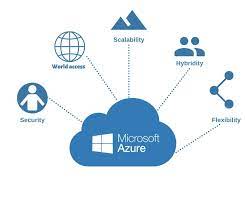Microsoft Azure is a cloud computing platform offered by Microsoft. Here’s more information about Azure and its advantages and disadvantages:
Advantages of Microsoft Azure:
- Wide Range of Services: Azure offers a comprehensive set of cloud services, including computing, storage, databases, networking, AI/ML, analytics, IoT, serverless computing, and more. It provides a broad range of options to meet diverse business needs and supports hybrid cloud deployments with seamless integration of on-premises infrastructure.
- Strong Integration with Microsoft Ecosystem: Azure integrates well with other Microsoft tools and services, such as Windows Server, Active Directory, Visual Studio, and SQL Server. This integration can simplify the development, deployment, and management of applications for organizations already invested in the Microsoft ecosystem.
- Hybrid Cloud Capabilities: Azure provides robust hybrid cloud capabilities, enabling seamless integration between on-premises infrastructure and the cloud. Azure Stack allows organizations to run Azure services on their own hardware, providing consistency in development and management across environments.
- Enterprise-Grade Features and Security: Azure offers enterprise-grade features such as identity and access management (Azure Active Directory), compliance certifications, security services (Azure Security Center), and advanced threat detection. It provides capabilities to meet stringent security and compliance requirements across industries.
- Scalability and Global Presence: Azure has a vast global infrastructure with data centers located worldwide. This allows for scalability, high availability, and low-latency access to services from various regions. Azure provides options for scaling resources both vertically and horizontally to meet changing demands.
Disadvantages of Microsoft Azure:
- Learning Curve and Complexity: Azure’s wide range of services and features can make it complex, especially for those new to cloud computing. Navigating the documentation, understanding service configurations, and optimizing costs can require a learning curve and substantial effort.
- Pricing and Cost Management: Azure’s pricing model can be complex, and estimating costs accurately can be challenging. Understanding the different pricing tiers, resource consumption, and optimizing costs across services requires careful planning and monitoring.
- Market Share: While Azure is a major player in the cloud market, it currently has a slightly smaller market share compared to AWS. This can result in a relatively smaller ecosystem and community compared to AWS.
- Service Maturity and Availability: Some Azure services may have varying levels of maturity compared to AWS. While Azure offers a wide range of services, the depth and maturity of specific services might differ. It’s important to evaluate the availability, features, and stability of desired services for your specific use cases.
Choosing between Azure, AWS, and Google Cloud depends on factors such as your organization’s requirements, existing infrastructure, expertise, integration needs, and specific use cases. It’s advisable to evaluate the strengths and weaknesses of each platform to determine the best fit for your organization’s cloud computing needs.
SHARE
